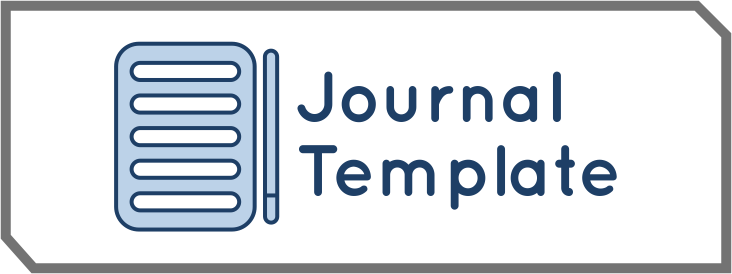Analisis Pemanfaatan Sampah Bernilai Ekonomis dalam Peningkatan Ekonomi Masyarakat Kota Medan melalui Aplikasi Kepul
DOI:
https://doi.org/10.59841/jureksi.v1i4.529Keywords:
Circular Economy, Economic Improvement, Waste ManagementAbstract
This study aims to describe the use of waste and economic improvement of the people of Medan City through the Kepul Application based on Circular Economy Theory and take data from the study. This study uses qualitative methods with data analysis techniques using qualitative descriptive analysis. The results show that the development of the Kepul application has always been the main thing in the company's mission, this is because of the development of applications according to customer suggestions such as the Live Location feature, re-schedule, membership, etc. The effectiveness of Kepul in increasing people's income is arguably very good, as evidenced by the increase in resource persons' income from the range of Rp. 100,000 to Rp. 800,000 a month. From the results of the study, it is known that there are still many obstacles in Kepul in becoming an intermediary container for waste utilization in Medan City such as lack of strong branding, fleet problems, and price difference problems with conventional collectors. But this obstacle is not an impossible obstacle to pass, with the successful collaboration of Kepul with the Medan City Government and plans to attract more investors, Kepul believes that all the obstacles above can be passed well.
References
Agustin,Abang ES.,Rianingrum,Cama J.,(2019) “Pendekatan Ekonomi Sirkular Dalam Pemikiran Desain Sebagai Materi Pendidikan Desain Untuk Pembangunan Keberlanjutan”. Jurnal Seni & Reka Rancang Volume 2, No.1
Bismoko,D.,Kristia.,(2021). “Sumbangan Etis Model Bisnis Ekonomi Sirkular Terhadap Pembangunan Yang Berkelanjutan: Eksplorasi Kualitatif Sistematik”. JURNAL LEDALERO Vol. 20, No. 2.
Bonang,D.,Rahmawati,N.,(2022). “Partisipasi Masyarakat Dalam Pengolahan Sampah Bernilai Ekonomi”. Jurnal Pengabdian Masyarakat Fakultas Sains dan Teknologi, Universitas Islam Negeri Imam Bonjol Padang Vol. 1 No. 1
Calvo-Porral, C., & Lévy-Mangin, J. P. (2020). “The circular economy business model: Examining consumers’ acceptance of recycled goods”. Administrative Sciences, 10(2).
Cavallo, M. (2018).”Circular Economy: Benefits and Good Practices” Urban regeneration mix View project.
Gao, H. Tian, X. Zhang, Y. Shi, L., & Shi, F. (2021). “Evaluating circular economy performance based on ecological network analysis: A framework and application at city level”. Resources, Conservation and Recycling, 168, 105257.
Handawati, R. (2020). “Mengenalkan Kegiatan Ekonomi Sirkular Personal Untuk Mengurangi Emisi Karbon Pada Siswa Sekolah Dasar”. Dalam Prosiding Seminar Nasional Pengabdian kepada Masyarakat (Vol. 2020).
Harahap, I., & Amini, S. (2019). “Peran Bank Wakaf Mikro Syariah Di Pesantren Mawaridussalam Dalam Pemberdayaan Ekonomi Masyarakat”.
Hasanah, N., Anggraini, T., Daim Harahap, R., & Islam Negeri Sumatera Utara, U. (2023). “Pengaruh Gaya Hidup, Media Sosial dan Lingkungan Sosial terhadap Perilaku Konsumsi di Masa Pandemi Menurut Ekonomi Islam: Studi pada Mahasiswa Prodi Ekonomi Islam Fakultas Ekonomi Dan Bisnis Islam UIN Sumatera Utara Medan”. Dalam MES Management Journal (Vol. 2, Nomor 1).
Imsar, Nurhayati, Harahap I. (2023)” Analysis of Digital Education Interactions, Education Openness, Islamic Human Development Index (I-HDI) and Indonesia’s GDE Growth”. Edukasi Islami : Jurnal Pendidikan Islam, 12 (1), 753-722
Kirchherr, J., Reike, D., & Hekkert, M. (2017).” Conceptualizing the circular economy: An analysis of 114 definitions”. Dalam Resources, Conservation and Recycling (Vol. 127, hlm. 221–232). Elsevier B.V.
Korhonen, J., Honkasalo, A., & Seppälä, J. (2017). “Circular Economy: The Concept and its Limitations”.
Kristianto, A. H., & Nadapdap, J. P. (2021). “Dinamika Sistem Ekonomi Sirkular Berbasis Masyarakat Metode Causal loop Diagram Kota Bengkayang”. Sebatik, 25(1).
Manik,Yuni M.,(2022) “Ekonomi Sirkular, Pola Berfikir Dan Pendidikan Untuk Keberlanjutan Ekonomi”. Jurnal Pendidikan Ekonomi UM Metro Vol.10. No.1
MS Kahfi, I Imsar.,(2022) “Analysis of management of zakat, infaq, alms (zis) funds in improving the economy of the dhuafa”. Fair Value : Jurnal Ilmiah Akutansi dan Keuangan Volume 4, Number 13,2022
Mukhopadhyay, B. R. (2021). “What is the Circular Economy?” The Sentinel, Editorial,8th September
Irwan Padli, Muhammad.,Yafiz.,M (2019) Mobile Composite Application Simulator As Efficient Learning Media. ARPN Journal of Engineering and Applied Sciences.
Nawawi, Z. Marliyah., Humairoh, J., (2022). “Strategi Peningkatan Ekonomi dan Tinjauan Ekonomi Islam Masa Covid 19 (Studi Kasus: UMKM di Kota Medan)”. Jurnal Ilmiah Ekonomi Islam, 8(02), 2027–2035.
Nurlela.(2017) “Dampak Keberadaan Tempat Pengolahan Sampah 3R (Reduce, Reuse, Recycle) Vipa Mas Terhadap Lingkungan Sosial Ekonomi Masyarakat Di Kelurahan Bambu Apus Kecamatan Pamulang Kota Tangerang Selatan”.
Patwa, N., Sivarajah, U., Seetharaman, A., Sarkar, S., Maiti, K., & Hingorani, K. (2021). “Towards a circular economy: An emerging economies context”. Journal of Business Research, 122, 725–735.
Purba, N.,Yahya, M. Nurbaiti.,(2021). “Revolusi Industri 4.0 : Peran Teknologi Dalam Eksistensi Penguasaan Bisnis Dan Implementasinya”. Dalam JPSB (Vol. 9, Nomor 2).
Purwanti,I.,(2021). “Konsep Dan Implementasi Ekonomi Sirkular Dalam Program Bank Sampah (Studi Kasus: Keberlanjutan Bank Sampah Tanjung)”. Jurnal Manajemen dan Ekonomi Vol. 4 No. 1
Sari,Sekar.,Lubis,FA .,(2022).”Analisis Pengelolaan Zakat ,Infak,Sedekah (ZIS) Untuk Meningkatkan Ekonomi Duafa Studi Kasus di Lembaga Amil Zakat Al-Washliyah Beramal Sumatera Utara,Medan”. Jurnal Penelitian Administrasi Publik,Vol.2 No.3.
Schröder, P., & Raes, J. (2021). “Financing an inclusive circular economy De-risking investments for circular business models and the SDGs”.
Siregar,AF.,Syahriza,R.,(2022).”Analisis Strategi Komunikasi Pemasaran
Asuransi Syariah pada Asuransi Jiwa Bumiputera Syariah”. Jurnal Manajemen Akuntansi (JUMSI) Vol.2 No.2
Tantangan, D., Sosial Banuprasetyo, P., & Trisyanti, D. (2018). Prosiding SEMATEKSOS 3 “Strategi Pembangunan Nasional Menghadapi Revolusi Industri 4.0” REVOLUSI INDUSTRI 4.0.
Tri, Fadhila Rahma, Imsar. (2019). Alumni Performance Based On Stakeholders Perception. Dalam Journal of Management and Business Innovations.
Valavanidis, A. (2018). Concept and Practice of the Circular Economy. Turning goods at the end of their service life into resources, closing loops in industrial ecosystems and minimizing waste.
Winans, K., Kendall, A., & Deng, H. (2017). “The history and current applications of the circular economy concept”. Renewable and Sustainable Energy Reviews, 68, 825–833.
Zairinawati.,Maftukhah,NA.,Novianty.,(2020). “Pengelolaan Sampah Bernilai Ekonomi Berbasis Masyarakat”. Jurnal BERDIKARI Vol.8 No.2
Yafiz,M,dkk (2023) “ Islamic religiosity and job satisfaction among Muslim teachers In Malaysia” HTS Teologies Studies / Theological Studies
Zamzami Elamin, M., Nuril Ilmi, K., Tahrirah, T., Ahmad Zarnuzi, Y., Citra Suci, Y., Ragil Rahmawati, D., Kusumawardhani, R., Mahendra Dwi, D. P., Azizir Rohmawati, R., Aji Bhagaskoro, P., & Fuatjia Nasifa, I. (2018). “Analysis Of Waste Management In The Village Of Disanah, District Of Sreseh Sampang, Madura”. Jurnal Kesehatan Vol.10 No.4








